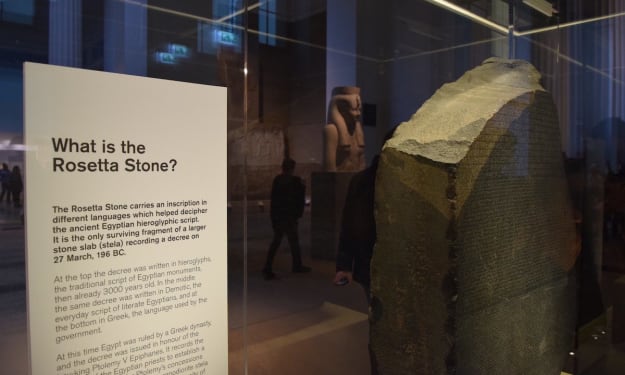Eternal Enigmas: Puzzling Marvels of Our World
Unveiling the unexplainable- Unraveling Tales of Strange Trees, Forgotten Temples, and Cryptic Ruins

In the realm of life on Earth and human history, the pursuits of scientists and historians have yielded many answers, yet the enigmatic facets remain elusive. Their expertise allows them to draw significant conclusions from subtle clues and fragments of evidence, yet sometimes they encounter baffling phenomena that defy explanation. The current discourse delves into a series of astonishing and perplexing locations scattered across the world. These sites stand as marvels to behold but continue to confound even the most astute scientific minds.
Casorso, Italy, presents an intriguing spectacle - the fusion of two disparate tree species into a single entity. This captivating phenomenon consists of a mulberry tree supporting a cherry tree on its crown. Such a hybrid occurrence, where two fully grown trees coexist harmoniously, is an extraordinary rarity in nature. Ordinarily, the well-being of one tree would come at the detriment of the other, often causing the upper tree to suffer. However, this unique case defies convention, as the cherry tree flourishes atop the mulberry tree. This natural oddity has transformed into a local tourist attraction, though protective measures are in place to prevent undue harm.
Austria's Heidentor, shrouded in mystery, stands as a testament to antiquity. Constructed during the rule of Roman Emperor Constantius II, between 351 and 361 AD, its precise purpose remains speculative. Although conjecture alludes to its role in commemorating military victories, the veil of uncertainty shrouds its true history. It has also garnered cultural significance, becoming a gathering place for pagans and earning the moniker "Heaven's Gate." However, the absence of statues and definitive historical records leaves the true origin and purpose of the Heidentor open to interpretation.
Lake Turkana's Invictus Island, known as "No Return" in Kenya, is shrouded in myth and legend. Tales of visitors never returning perpetuate the enigma, with accounts of explorer Vivian Fusch and his companions disappearing in 1935 reinforcing its mystique. Aerial images reveal ancient hut-like structures at the center of the island's crater. Despite curiosity, fear, and speculation, the truth behind Invictus Island remains concealed, its secrets guarded by the seemingly ominous forces that surround it.
Syria boasts many magnificent temples, each carrying its narrative, yet the Temple of Andara stands out due to its captivating feature - the colossal footprints etched at its entrance. These imprints have endured for over 3,300 years, sparking debates among scientists and local legends alike. While experts attribute them to the temple's creators, locals spin tales of a god with clawed feet leaving his mark. Another theory points to a race of giants as the originators. Although the temple has faced damage over time, the footprints continue to intrigue and fuel speculation.
Abu Ghraib, located in Egypt, houses the remnants of a sun temple dedicated to the god Ra. While the Great Pyramid of Giza receives substantial attention, this temple's existence is relatively obscured. Constructed around 2400 years ago, it once featured a stepped pyramid. Massive red granite blocks and intricately carved alabaster dishes provoke fascination among archaeologists. The precision engineering evident in these remnants sparks intrigue, leaving questions about the advanced technology that may have been employed.
The Pyramid of Ciacilco in Mexico City presents another enigma. This ancient structure's origins are obscured by time, with traces of farming activity indicating habitation dating back thousands of years. The eruption of the Seatlay Volcano during the first century AD brought an end to the civilization that inhabited the region. While some believe the population perished, others suggest survivors dispersed and contributed to the rise of later cultures, leaving behind an enigmatic pyramid and a legacy of unanswered questions.
Barsak Plateau in Kazakhstan, named "Whoever comes here shall not return," resonates with mystery and unease. Declared a national reserve in 1939, it was off-limits for most of the 20th century. Accounts of electronic devices malfunctioning and people experiencing unusual skin discoloration add to the intrigue. The plateau's eerie reputation has endured, sustained by legends of time distortion and anomalous experiences, painting it as an enigmatic and possibly supernatural place.
Jordan's Amman holds an artifact that perplexes and impresses in equal measure - the stone hand of Hercules. This colossal broken hand, part of an unfinished temple, hints at an abandoned grandeur. Built during the Roman occupation, the temple's purpose remains a mystery. Despite its ruinous state, the marble nails and cuticles of the hand reflect the attention to detail in its construction. While historians agree on the Roman origin, the true purpose and the reason for its abandonment remain speculative.
The Lost City of the Kalahari is a tale riddled with controversy. Triggered by Canadian magician and explorer William Leonard Hunt's 1885 claim of discovering ancient ruins, the city's existence remains disputed. Hunt's description led to numerous expeditions that yielded no concrete evidence. Some theories posit the ruins as a product of natural rock formations, while others hypothesize a pre-Columbian civilization. The city's enigmatic allure persists, fueling quests to unveil its secrets.
Concrete rings along the coast of the Barents Sea are a lingering Nazi legacy. The Soviet military's post-war control heightened speculation about the purpose of these structures. Theories range from anti-gravity experiments to secret weapons development. Among the conjectures is the notion that these rings were linked to the "Die Glocke" project. While these locations might have hosted rotating artillery, the allure of Nazi mystery continues to incite wild theories.
In North Yorkshire, England, Swinton Druid's Temple captivates with its appearance of ancientness. Despite its name, this temple is a relatively modern creation, built just two centuries ago by landowner William Danby. An eccentric visionary, Danby aimed to alleviate local unemployment by employing residents to construct the temple. The structure, resembling Stonehenge, attracted a hermitage challenge that was never completed. While not genuinely ancient, the temple's allure extends to modern-day New Age practitioners.
Gunji Wamp in Groton, Connecticut, USA, presents an archaeological puzzle spanning over a millennium. Disparate settlers have left their marks on the site, complicating the narrative. Stone chambers, rings, and inscriptions raise questions about the site's origin. Various theories suggest Celtic Christian monks, electromagnetic anomalies, or Native American influence. Despite efforts to decipher its history, Gunji Wamp remains a mysterious crossroads of enigmatic history.
Intriguing and perplexing, these enigmatic sites exemplify humanity's enduring fascination with the unknown. As scientists and historians continue to explore and probe, the allure of these mysteries persists, inviting imagination, speculation, and a relentless quest for answers.
About the Creator
Enjoyed the story? Support the Creator.
Subscribe for free to receive all their stories in your feed. You could also pledge your support or give them a one-off tip, letting them know you appreciate their work.






Comments
There are no comments for this story
Be the first to respond and start the conversation.